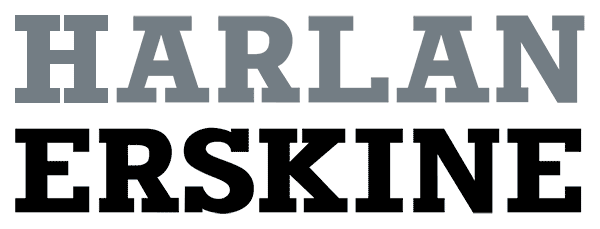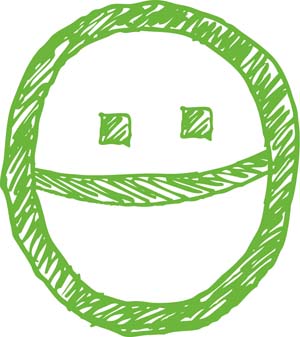Bring ½ cup of chicken broth to a boil in a big pan over medium high heat.
Add the peppers, onions, potatoes, garlic, and cook, stirring, for 5 minutes.
Add chicken and cook, stirring, for 1 minute. Add jalapeno, stewed tomatoes, cumin, and the rest of the chicken broth and bring the mixture to a boil. Let simmer, uncovered.
Add cilantro and lime juice to taste - top each bowl of soup with strips of tortilla.
Soup Kitchen
Hours of Operation: Thurs, Fri, Sat 10a - 6p March 5 - April 16, 2011
Show Press Release:
RIRKRIT TIRAVANIJA - FEAR EATS THE SOUL
02/23/2011 - 04/16/2011
FOR IMMEDIATE RELEASE
Rirkrit Tiravanija - FEAR EATS THE SOUL
March 5 - April 16, 2011
Tiravanija's first exhibition in New York - Pad Thai - was over 20 years ago. Since that point Tiravanija has consistently defied expectations of the form, and status of the work of art. He has upended cultural conventions of audience and its role, challenged ideas of the utility in the art object, and revealed the boundaries between art and life to be illusion.
Tiravanija changed the paradigm of art making twenty years ago and that change began with the challenge and simple temptation of food. He released the pungent aromas of spices and fish sauce into the white cube, made a crack in our perceived freedom to reveal a new liberty of open and unending possibilities. The sensual and messy reality of food preparation and consumption were literally displayed before us. In one spoonful he swept away notions of the timeless masterpiece and the instant cultural artifact. In its place he proposed a new exhibit, and a new artifact: Ourselves, in each other’s company, eating. This was a cultural displacement that put an uncomfortable and thrilling frame around chopping, frying, stirring, slurping and doing the dishes. It exploded our ideas of sculpture to include even our digestive tract. With this meal, and their remains, Tiravanija reintroduced us to time - and our fundamental relationship with it that today we would prefer to forget. In all his works since Tiravanija has focused our attention back to time. Real time. Lived time. He has shoehorned its inevitability back into our cultural language.
In 1992, he made Untitled (Free). The body of the gallery was stripped and laid bare. Its inventory, its files, its doors, its blinds, its people - everything it contained - were stuffed into the main exhibition space inpragmatic rows. In the office was an improvised kitchen with a fridge, a gallery door as table for a preparation, burners, rice cooker, pots, tables and stools. The days of the exhibition passed unremarkably. Groceries were bought and refrigerated. Meals were cooked and eaten. Visitors came to see. Then came back to eat. The tall second floor windows of the office, free of blinds, wrapped round the corner of Greene and Spring streets. Depending on the weather each day, the office would be flooded with that particular light of New York in the Springtime. Rather than being circumscribed by the gallery,Free leaped out through the windows and into the open air.
In 1994, Tiravanija made/curated a two person show with his other half, Andy Warhol. It was a hybrid retrospective of sorts for each artist. Tiravanija created a binary set up of three pairs of work, with one work by each artist in each pair: A Mao and a stack of beer bottles; a Brillo box and a wok; a bed and a pile of books and movies. Each pair created a metaphysical and cultural bridge across time and space from one world to another. Each side looking at the other in the mirror and being disgusted at themselves. One side surface and mediated, the other dirty and touched, but both steeped in melancholia and necrophilia.
In 1999, he made a plywood twin of his apartment on E7th Street, with working toilet shower and kitchen. This is an apartment he has lived in for more than 30 years and its contours and spaces are known to him intimately. The' apartment' in the gallery was well used (as was another version in Germany the year before). It was open 24 hours a day and birthdays were celebrated, beds were slept in, baths were taken and meals were cooked and eaten. It became a vessel for two months of unedited and diverse human activity. Was this doppleganger a chance to walk in his shoes? To live his life? Or perhaps an existential recognition of the impossibility of knowing anyones human's experience apart from our own, no matter how closely we rub up against them. It was no place like home.
This work, like many others he has made using architectural space, functioned as a form of reliquary. Enormous fetishes or lived photographs that could replay moments on a new stage attempting to aggregate that human experience although knowing they will fail. Like much of his work these spaces posed a question - where is art (our culture) contained?: Within the object? Or within the memory of those who pass through it? It has been argued that language was first acquired by humans simultaneously to the development of hunting and cooking. Around the fire food, time and space came together to create an environment where cooperation in survival gave birth to human relations. In Tiravanija's view these moments are still present with us today. There are still real opportunities to develop our language and to create ourselves. We make new temples to us, our greatest creation.
Opening on March 5, 2011, Rirkrit Tiravanija will open a new exhibition at Gavin Brown's enterprise. Taking its title from the Fassbinder film Ali - Fear Eats the Soul a story of love bridging the existential divide, the show will feature, amongst other elements a T-Shirt Factory and a soup kitchen. His preoccupation with time will be overarching. Space and memory will fuse while the stomach demands a focus on the present moment.
Tiravanija is the winner of the 2010 Absolut Art Award and the 2005 Hugo Boss Prize awarded by the Guggenheim Museum. Tiravanija was also awarded the Benesse by the Naoshima Contemporary Art Museum in Japan and the Smithsonian American Art Museum's Lucelia Artist Award. He recently had a retrospective exhibition at the Kunsthalle Bielefeld along with previous retrospective exhibition at the Museum Bojmans Van Beuningen in Rotterdam that then was presented in Paris and London. Tiravanija is on the faculty of the School of Visual Arts at Columbia University, and is a founding member and curator of Utopia Station, a collective project of artists, art historians, and curators. Tiravanija is also President of an educational-ecological project known as The Land Foundation, located in Chiang Mai, Thailand, and is part of a collective alternative space called VER located in Bangkok-- where he maintains his primary residence and studio.
For more information please contact - Hannah Hoffman, Parinaz Mogadassi +1 212 627 5258, hannah@gavinbrown.biz, parinaz@gavinbrown.biz .






